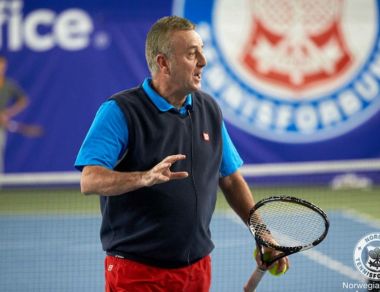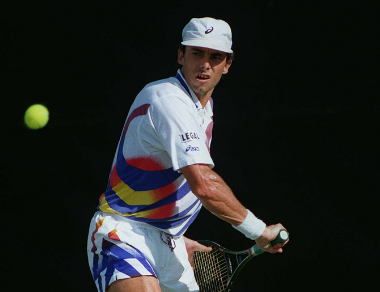Tennis today is very fragmented at the professional level and faces considerable challenges in overall participation worldwide. In most developed tennis markets, tennis participation has reduced with the numbers playing tennis in the biggest market, the USA, reducing from 30 million in the early 80s to 18.6 million in 2016 with sales of tennis equipment down year on year. Canada is one of the few developed tennis nations where tennis participation has increased significantly over the past 10 years. Lower levels of tennis participation, of course, have a knock-on effect on the tennis industry and on the number of people viewing tennis at the professional tour level and this is very evident at some of the current ATP and WTA top tournaments.
What is a healthy sport?
A healthy sport is one where many people play the sport competitively or for fun at all levels especially at the recreational level. Because many people play the sport and have fun doing it, they want to buy things (coaching and equipment) that helps them play better and they want to watch the sport played well on TV and live by the top professionals. Quite simple really.
The Big TEN
I would like to share 10 proposals related to the 5 areas shown below which I believe can make a difference in tennis from the high performance/professional to the recreational player playing at club level:
- Professional Tennis
- International Junior Tennis
- ITF events including Davis Cup and Fed Cup
- Increasing Tennis Participation worldwide
- Working Together for the good of the game
Each area will be published in serial form in Elite Tennis over the next two weeks commencing today with 3 proposals under professional tennis.
“Professional Tennis Going Forward”
1. Introduce a “CUT” at professional tennis events.
The last few days of the professional tournament are usually a bit dead and the finals day is the quietest day of all. If the final is not an exciting affair, the day can be a disappointment to the fans attending. Tennis fans buy tickets for the final few days in the hope that they can watch their favorite players but then often find that these players may not be playing on the last few days of the event because they lost earlier. Imagine if professional events introduced a cut like they have in golf, whereby all players reaching the quarter finals continue to play for the rest of the event. On the last day of the tournament, you will have a final which is the showcase match, but you will also have a play off for 3rd and 4th, 5th and 6th and 7th and 8th positions and the points and the prize money for each position would be different so these matches are competitive.
Having the final 8 playing for the final few days will be positive in so many ways (including from a sponsor’s and TV point of view that they can plan promotional initiatives). The play off matches could be played with 2 sets and a champions tie break instead of a full final set to make it less physically demanding for the players. But when considering the physical demands of the players, remember that all of the players enter the 64 draw tournament hoping to play 6 matches and to reach the final. If the winner and runner up can play 6 matches, why not the other quarter finalists? For sure, this would create considerable interest at the current ATP and WTA events and potentially generate more revenue to events currently losing money. But at Grand Slam level, wouldn’t a play-off match for 3rd place mean something? It certainly means something at the Olympic games.
2. Create regional circuits for the entry level professional tour.
The ITF is planning to launch a new transition tour at the entry level of professional tennis in 2019. This was, potentially, the most important change in professional tennis in 40 years and was a chance to change the way tennis at this level is organized. The format that ITF is intending to implement is pretty much what was there before (without ATP and WTA points). It’s still a global circuit, with a global ranking and the circuit will continue to encourage players to travel similar amounts and will offer the same prize money levels of $15,000 and 32 draws. The players at this level will have similar costs to before with no chance to win extra money which was one of the original objectives for change. I think that the proposed ‘new’ tour” is likely to make it more difficult for players from Developing Tennis nations to make a breakthrough in the future? So, what is the upside?
I think Tennis should learn from golf and their regional tours with the best players eventually having a chance to progress to the main professional tour. You could easily establish 3 regional tours:
• An ITF Pan American Tour
• An ITF Euro African Tour
• An ITF Pacific Oceania Tour.
The best players on each tour could then get their ‘card’ to play on the professional tour in the following year. From my experience in ITF Development, I am certain that these tours would attract a lot of sponsors as many sponsors prefer today to sponsor on a regional basis and It’s getting increasingly harder to find global sponsors. From my current experience in Asian tennis, I believe an Asia Pacific tour would be very well supported by sponsors.
One of the ideas of changing the entry level tour was to make it possible for players to earn a living or as a minimum to break even. How will the proposed transition tour help the players earn more money? What if we organize these $15,000 tournaments with 16 main draw players and with 32 players involved in qualifying. What would this do? This change would automatically double the prize money for the best players participating and because the events could be played in 4 days and the players could therefore play 6 events in a month, potential monthly earnings for the best players would be tripled. There would also be less hosting costs for the nations. The best players on the regional circuits could be more easily promoted and some could develop “star status” in their regions. Being ranked number 10 in Asia Pacific certainly has a better ring to it than number 220 in the World rankings. Regional tours would impact on the number of pro players in tennis making a good living which I believe should be around 400 men and women. It’s disheartening that a player no. 200 in the ATP/WTA rankings, who has sacrificed so much in their life to become a top athlete loses money.
3. Encourage the top players to play doubles more often.
Doubles is a great part of tennis. It was not so long ago that the best men and women professionals played doubles and it was showcased well at top professional events. Doubles has been somewhat side lined in professional tennis today and this fact is best illustrated by the men’s doubles final at one Grand Slam being played on Friday morning in front of a half empty stadium.
The tennis history books measure a player’s place by their success in Grand Slams, Davis Cup and Fed Cup and the Olympics. If you win a doubles Grand Slam, you are in the history books. There are many examples of top singles players of the past 2 decades that had considerable success in singles but, because they rarely played doubles, never won a grand slam in doubles. Tim Henman is a good example of this. He was a great player and was top 4 ranked making semi-finals of three of the slams, but he never won a grand slam in doubles although he was a very good doubles player winning doubles silver in the Atlanta Olympics. Compare that with Sonya Mirza and Leander Paes who are in the record books as multiple Grand Slam doubles champions. Jean Julian Rojer, who is from Netherland Antilles and whom I first saw play in Jamaica in an ITF funded Caribbean event at age 12, is in the record books as a two-time Grand Slam doubles champion.
In the women’s game, the top players still play doubles and the Williams sisters have helped to show that it is possible to be successful at both in the women’s game. But participation by the best singles players in doubles in the women’s game is reducing. It’s obvious that for doubles to be relevant in the modern day professional tennis, it needs to be able to attract and motivate more of the best players to players to play more often and I have 3 ideas that I think can help:
Introduce a Combined ranking for singles and doubles.
I know that many people will say that this is not viable, but I don’t agree. Let me start by sharing my experience with International Junior Tennis which I oversaw for the ITF from 1997 until 2015. In 2004, Marcos Baghdadis was ranked number one in singles and number 600 in doubles. At that moment, most of the top juniors were not playing doubles at the top international 18 and under level and this was impacting at national level all the way down to 12 and under with kids of that age declaring “I don’t play doubles!”. This was not good for the game. The Development department got approval from former president Francesco Ricci Bicci to change the ranking the next year to a combined ranking with 75% counting singles results and 25% counting doubles. It worked. All the top juniors immediately committed to play doubles and this cascaded down to all levels of Junior tennis on a national basis with combined ranking now being used by all nations in junior tennis.
At professional level, I would suggest a ratio of something like 85% singles results and 15% doubles as a good start. The top 10 singles players would not play all the time unless trying to qualify for end of year events, but it would certainly motivate players between 10 and 100 to play more doubles.
Start Doubles at Grand Slams in the second week.
Why not start doubles in the second week of Grand Slams and allow sign in on the middle Saturday? This would allow singles players that have lost early in the singles to enter. It would also give the second week of a Grand Slam some great doubles tennis to watch on outside courts when there is less singles to watch and better showcase this part of tennis. One potential issue is the number of courts available in the second week but this could easily be solved by having the Seniors events and Juniors events starting in the first week.
Provide a Doubles end of year bonus linked to singles and doubles results.
Offer a bonus to the man and woman player with the best combined singles and doubles results at the end of the year. It’s interesting to note that the last men’s player to have won both men’s singles and doubles grand slam titles was Leyton Hewitt who won US Open doubles in 2000 and US open singles and Wimbledon singles in 2001 and 2002.



